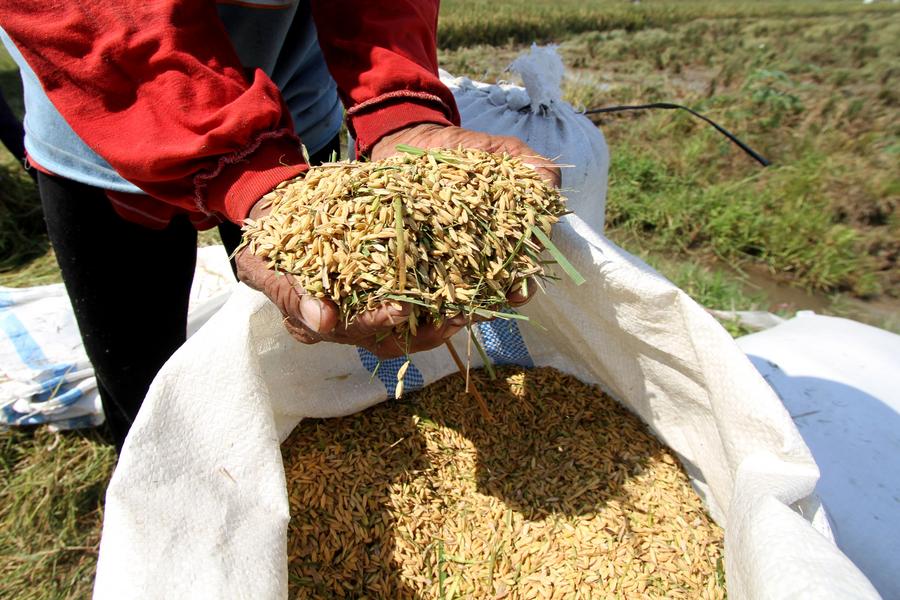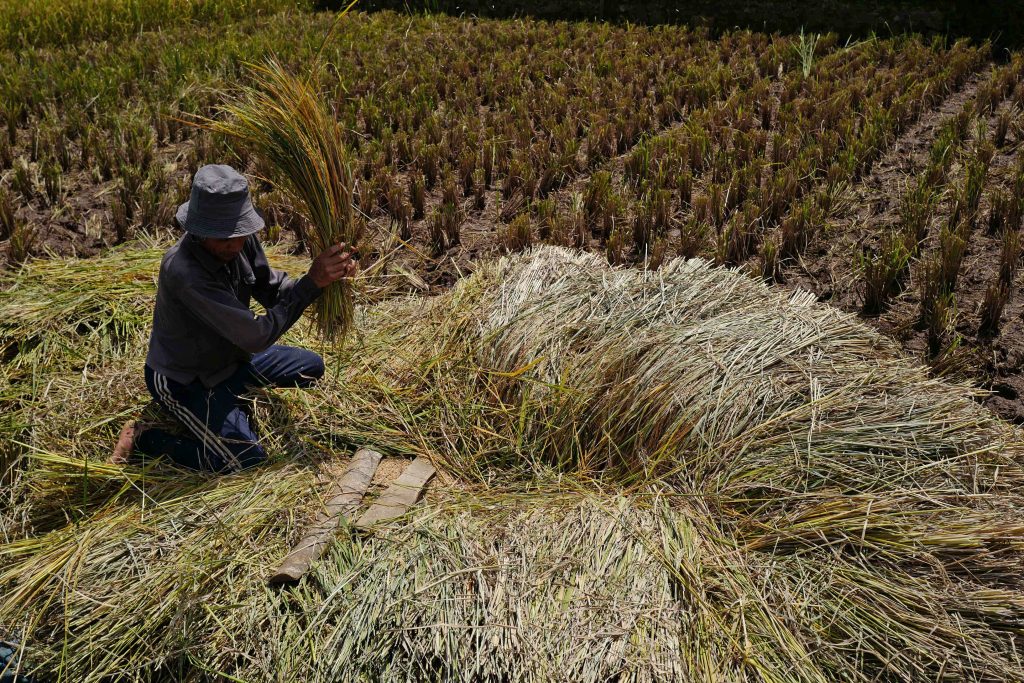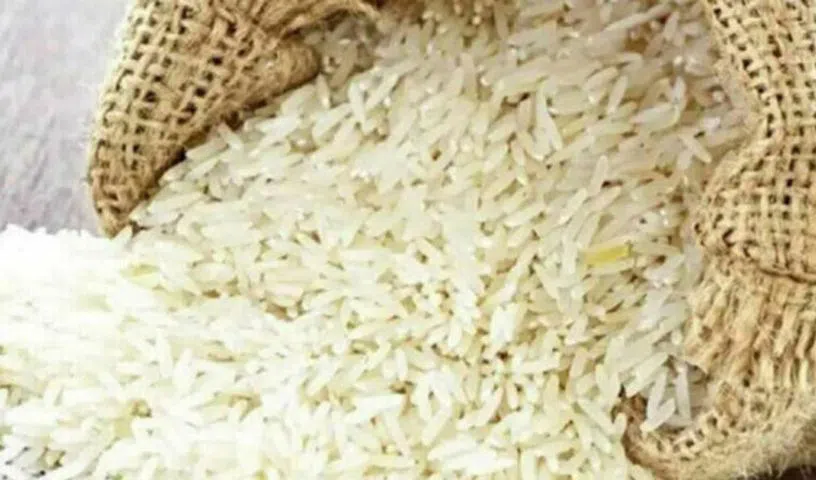Tags
Why Punjab wants to ban the cultivation of PUSA-44 paddy variety.
PUSA-44 paddy once covered 70 to 80 per cent of the state’s total area under paddy cultivation, and Punjab’s farmers expressed immense satisfaction with its high yield. Why does the state now want to ban the variety? We explain.

PUSA-44 was developed in 1993 by the Delhi-based Indian Council of Agricultural Research (ICAR). Subsequently, Punjab’s farmers started sowing it in a few areas. (Representational/Express photo by Renuka Puri)
Punjab Chief Minister Bhagwant Singh Mann announced on Wednesday (October 4) that the state will ban the cultivation of the PUSA-44 paddy variety from next year onwards.
At one point, this variety covered 70 to 80 per cent of the state’s total area under paddy cultivation, and Punjab’s farmers expressed immense satisfaction with its high yield. What was behind this sentiment, and why does the state want to ban the variety? We explain.
When did Punjab farmers begin cultivating PUSA-44?
PUSA-44 was developed in 1993 by the Delhi-based Indian Council of Agricultural Research (ICAR). Subsequently, Punjab’s farmers started sowing it in a few areas initially. After getting a high yield from the crops, they started increasing the area under PUSA-44 by multiplying the seed.
By the end of 2010s, it had gained widespread popularity among farmers across the Punjab, covering approximately 70 to 80% of the area under paddy cultivation.
“However, the Agriculture Department and Punjab Agricultural University, which have never promoted it from the beginning, began discouraging farmers due to declining groundwater levels,” said Dr Amrik Singh, District Training Officer, Gurdaspur, who is posted in the state’s Agriculture Department.
By 2018, the Punjab government reduced the area under PUSA-44 to 18 per cent of the total area under paddy, but it rebounded to 22 per cent last year. According to the Agriculture Department, in the previous year, 7.74 lakh hectares (19.12 lakh acres) of paddy were under Pusa-44, out of a total non-Basmati paddy area of 26.61 lakh hectares.
How much yield farmers are getting from PUSA-44 as compared to other varieties?
Farmers claim that PUSA-44 yields nearly 85 to 100 mann (34 to 40 quintals) per acre, while other varieties’ yield average is 28 to 30 quintals per acre. Many farmers are able to get a yield of 36 to 40 quintals per acre with PUSA-44 if the weather is favourable. Currently, the Minimum Support Prince (MSP) offered for paddy is Rs 2,205 per quintal, so if it yields farmers 7-10 quintals more than the other varieties, then it will add to their income by Rs 15,000 to 22,000 per acre.
Why has the Punjab Agriculture Department discouraged its cultivation?
PUSA-44 is a long-duration variety, taking around 160 days to mature. This is around 35 to 40 days more than other varieties, requiring 5-6 extra cycles of irrigation. With Punjab facing severe groundwater depletion and the availability of short-duration paddy varieties, the government aims to conserve one month of irrigation water by banning the variety.
Additionally, the area under paddy, a water-intensive crop to begin with, continues to grow in the state. As many as 102 of the state’s 141 agricultural development blocks were declared ‘dark zones’, in which the rate of groundwater depletion exceeded the rate of recharge, and the water was available at depths of 200 to 300 feet or more – extractable only by using deep tube wells.
Moreover, this variety is also known to exacerbate the long-running issue of stubble burning in the state. The straw stubble or residue of the rice crop planted in the Kharif season (from July to October) is left in the fields as the winter crops (for the rabi season from November to March) are set to be planted. To clear their fields in time for planting the next season’s crops, farmers burn the stubble.
In combination with certain wind movements and a variety of factors, it contributes to the severe levels of air pollution in most parts of north India during the winter.
How does PUSA-44 aggravate stubble burning in Punjab?
Due to its extended maturity period, PUSA-44 is harvested just before the sowing of wheat, typically at the end of October, while the ideal time for wheat sowing is November 1. Ideally, farmers need 20 to 25 days between paddy harvesting and wheat sowing to manage stubble disposal properly.
This limited timeframe makes it challenging to manage stubble through in-situ and ex-situ methods (within the fields and outside the fields, respectively), leading to increased incidents of stubble burning. Additionally, PUSA varieties generate around 2 per cent more stubble than short varieties, which becomes a significant concern when cultivated on a large scale.
PUSA-44 is grown extensively in several districts of Punjab, including Barnala, Sangrur, Ludhiana, Moga, Patiala, Fatehgarh Sahib, Muktsar, Bathinda, Faridkot, and Mansa. Stubble-burning incidents are notably higher in these districts.
According to the Punjab Remote Sensing Centre (PRSC) in Ludhiana, in 2022, Sangrur saw stubble in 73 per cent of its rice cultivation areas being burned. Also, Ferozepur was at 69 per cent, Faridkot at 66 per cent, Fatehgarh Sahib at 62.7 per cent, Muktsar at 61 per cent, Bathinda at 59 per cent, Mansa at 58 per cent, Moga at 56 per cent, Faridkot at 66 per cent, and Mansa at 58.8 per cent.
PRSC records show that these fires typically began in the third week of October, coinciding with the harvest of the long-duration PUSA variety, and persisted until November 25. There are a couple of districts, like Ferozepur, Fazilka etc., which also showed considerable burning but here some other long-duration paddies and Basmati varieties are sown that are also harvested close to the wheat sowing period.
https://indianexpress.com/article/explained/punjab-ban-pusa-44-paddy-explained-8969472/Published Date: October 5, 2023







